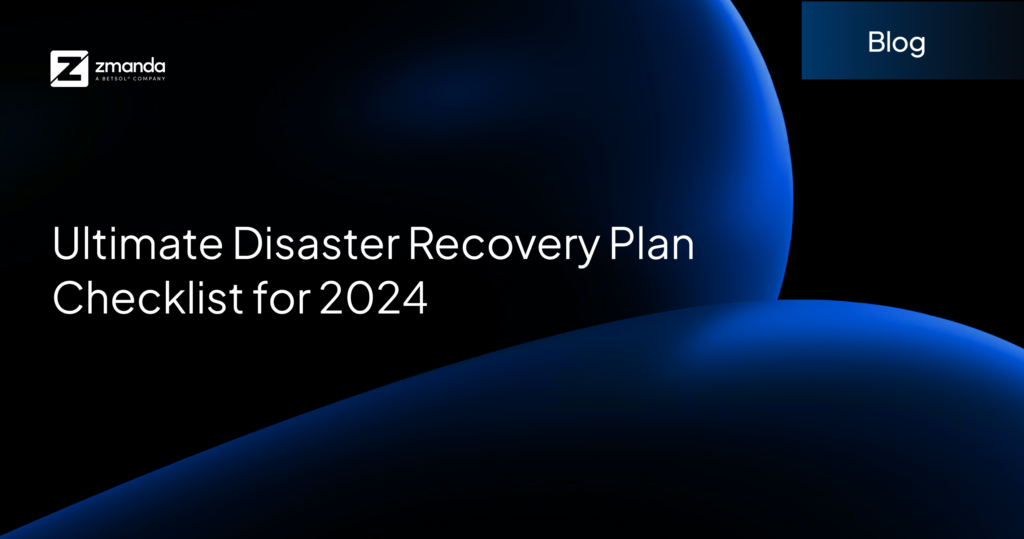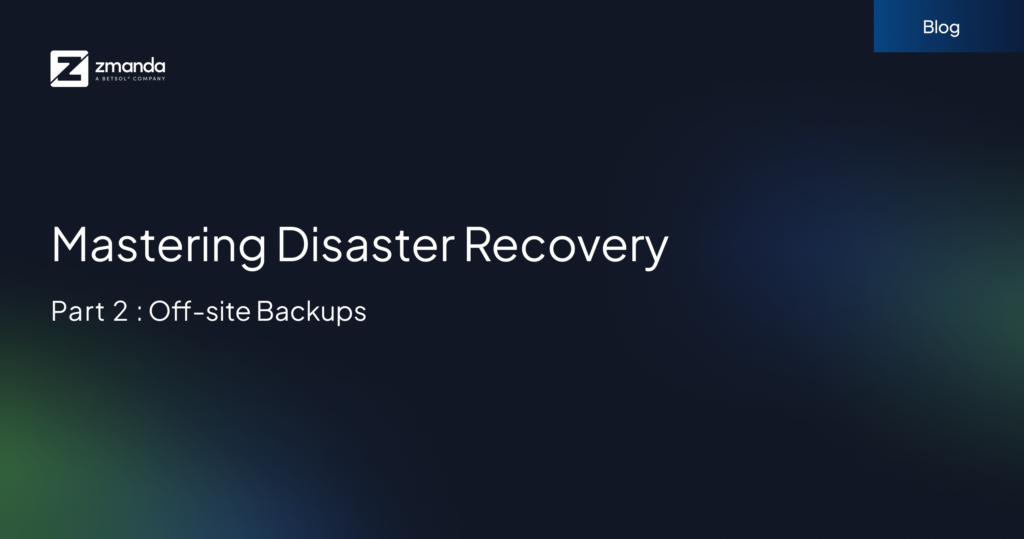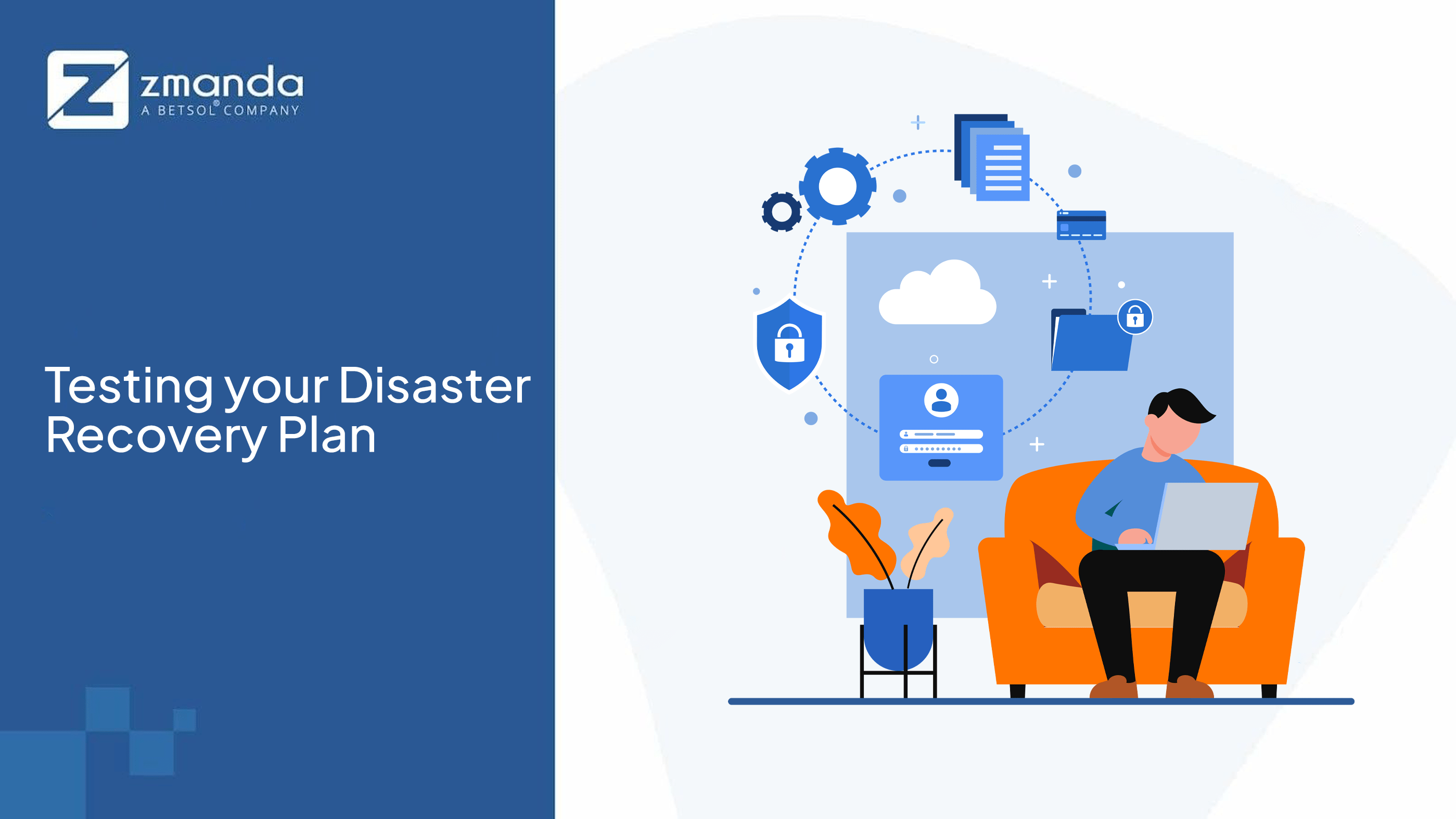
What is the Meaning of Disaster Recovery Testing?
Disaster recovery testing simulates real-world disruptions to assess the effectiveness of your disaster recovery plan (DRP). These disruptions can be anything from technological nightmares like ransomware attacks or hardware failures, to physical events like natural disasters or power outages. It’s like a fire drill for your IT infrastructure, identifying weaknesses and ensuring your team is prepared to restore critical operations quickly.
Understanding the Fundamentals of Disaster Recovery Testing.
1. What is a Disaster Recovery Plan?
Nothing is invented and perfected at the same time. ~John Ray
Immortal or mortal, the probability of achieving a hundred percent efficiency in anything we do is close to none. Our Disaster Recovery (DR) plans are in no way divergent. However, inefficiency or failure aren’t indications of downfall but rather the stepping stones to achieving superior results.
Our article on Disaster Recovery (DR) is essential in understanding disaster recovery’s hand in data backup and reducing losses incurred due to natural or technical disasters. In precis, disaster recovery is an act of using one’s foresight to mitigate risks that may occur in the foreseeable future. A Disaster Recovery Plan is a fruitful outcome of accounting for disaster recovery through words and concrete steps. Essentially, it is a document encompassing various precepts and guidelines that an organization follows under sundry disasters. Thus, understanding minute details and identifying equivocal scenarios is key to developing a better Disaster Recovery strategy and an effective DR plan.
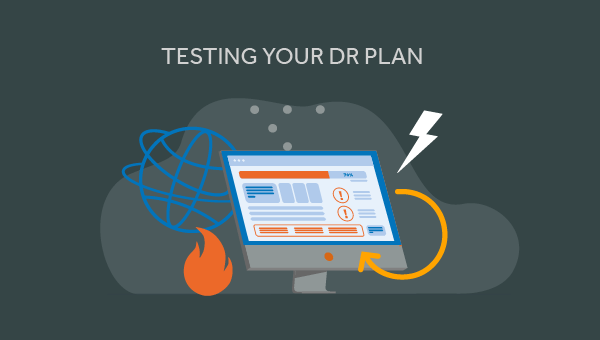
2. Understanding Your DR Plan
A DR plan consists of the possible disaster scenarios and the strategies developed to fortify their equipment and data from the same. However, an organization can excel in its plan of action only when they have digested the fact that its environment is dynamic and consistency is a mirage. The DR plan must be iteratively studied and improvised to tackle the inevitable inconsistency.
To achieve this, the DR team must be able to do the following:
- Existing Shortcomings: Identifying the shortcomings of their plan, similar to debugging a program code and finding appropriate fixes.
- Developing Environment: Understanding the changes imposed on the current strategies due to the developing environment. The DR team must be aware of the evolution of technology and the challenges that tag along with the same.
- New Risks: The DR team must consider these risks to assemble a foolproof plan. In a dynamic environment, the addition of challenges is unavoidable. The DR team must thus keep a keen lookout to ensure that the crevices are kept closed and tightly sealed from malicious intervention.
Why is Disaster Recovery Testing Important?
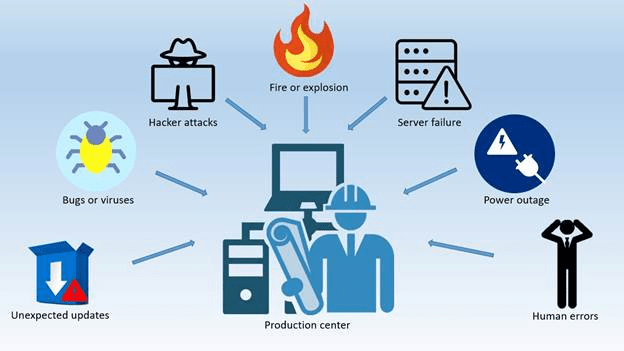
As John Ray had rightly said, the probability of achieving a foolproof DR plan at the very first attempt is humanly impossible. It may be a direct consequence of failing to consider all aspects of the software or network setup, the implications of the underlying hardware, up-gradation of the servers, software or hardware, and other such reasons. A 2023 Gartner report highlights the financial impact of IT outages, with the average cost reaching $10,000 per minute. Therefore, for the DR plan to compete with its environment and ensure to meets the RPO and RTOs, it is essential to conduct iterative DRP (Disaster Recovery Plan) testing at regular intervals to minimize downtime and associated financial losses.
Best Practices for Disaster Recovery (DR) Testing
- Define Your Objectives: Clearly outline your goals for each DR test. Are you focusing on specific recovery procedures, team response under pressure, or overall plan effectiveness? This ensures your tests are targeted and informative.
- Schedule Regularly: Integrate DR tests into your IT calendar, just like any other critical business process. Consider quarterly or annual testing to keep your plan up-to-date and your team prepared.
- Develop Realistic Scenarios: Don’t just test for sunshine! Craft disaster scenarios that reflect potential threats to your IT infrastructure, such as cyberattacks, power outages, or natural disasters. This ensures your plan is effective against a variety of disruptions.
- Assemble Your Team: Disaster recovery is a team effort. Involve key stakeholders from across the organization, including IT, operations, and management, in the testing process. This fosters collaboration and ensures everyone understands their role during a real event.
Testing in Action:
- Follow the Script: During DR tests, meticulously follow your documented DR plan. This helps identify any gaps or inconsistencies in your procedures so you can address them before a real crisis hits.
- Document Everything: No detail is too small! Record the entire testing process, including successes, failures, and most importantly, lessons learned. This documentation serves as a goldmine for improving your DR plan over time.
- Debrief and Refine: Once the testing DR is complete, gather everyone involved for a thorough debriefing session. Discuss the results, identify areas for improvement, and use these insights to refine your DR plan for the next test.
DR Testing with Reduced Staffing

As the idiom rightly conveys, too many cooks spoil the broth, and automation of disaster recovery and management has led to the decline in the need for human intervention. The high level of scrutiny and care devoted to recruiting a small but equipped group of experts to be a part of the DR testing team compensates for the reduction in staff. Apart from the evident reason of being cost-effective, the probability of complications and miscommunications decreases as a tight-knit group with like-minded interests leads to effective DR testing.
Executional Stages of Disaster Recovery Testing – Create, Simulate & Emulate, Consolidate
Every product requires iterative testing, prototype testing, beta testing, etc., to identify the success and failures of updates and features introduced during each iteration or in the maintenance stage.
Likewise, extracting the shortcomings of a DR plan is majorly dependent on the ability of the DR team to match the testing environment with the actual environment to monitor and simulate the working of the DR plan.
The testing of the DR Plan involves the following stages:
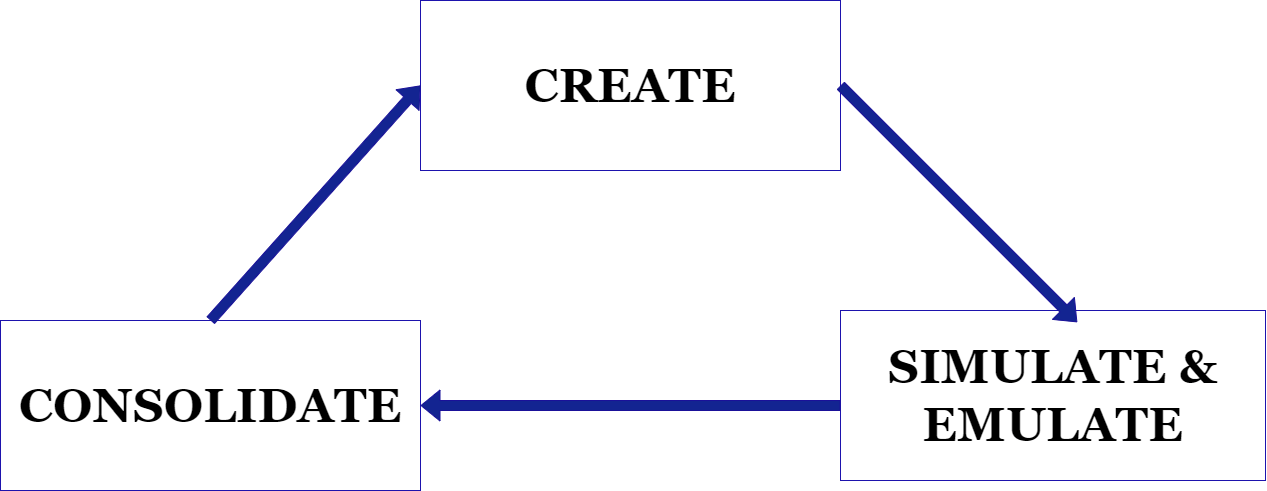
Stage 1: Create
The testing of the DR plan is as successful as the tests deployed to scrutinize its behavior. The tests must cover every test case and pay attention to corner cases requiring a keen eye. Further, to analyze the results of these tests and draw out comprehensive inferences, the tests must refrain from being equivocal.
How Do We Do So?
- Identify the purpose of the test. The tests must be cohesive with less coupling to ensure that each feature of the DR plan is subject to testing.
- Identify and emphasize the parameters or objectives used to measure the success or failure of a test.
- Identify the members’ roles and write a comprehensive description of the working environment to ensure the proper deployment of the test.
Remember, meticulous documentation is the key to opening doors to the beyond! The beyond, a mitigated world with a fortified armor ready for anything that comes its way!
Given below are examples of deployable tests:
- Paper test: The paper test involves the combined efforts of all the members of the DR team. The plan is read word by word, uncovering missed pointers and identifying equivocal language (also referred to as tabletop exercises).
- Parallel test: Parallel tests involve the simultaneous working of two kinds of systems. The recovery systems are tested against the various identified scenarios to monitor their ability to handle transactions and mimic the working of the primary system. Meanwhile, the primary systems continuously work at optimal capacity with zero hindrance.
- Cutover test: In contrast to parallel tests, the cutover test primarily focuses on the recovery system that takes over the entire workload in the event of an untoward scenario. Hence, this necessitates for the primary system to remain inactive to carry out a proper analysis of the failover recovery system.
For a comprehensive guide on developing and testing business continuity plans, consider referring to the resources available from the Federal Emergency Management Agency (FEMA).
Stage 2: Simulate & Emulate
Reiterating our previously mentioned pointer, the analysis of a DR plan is only as good as the simulation environment that strives to test the plan’s potential. DR simulation is another form of DR testing and invariably the most important one.

The simulation helps in spotlighting the below insights:
- Firstly, the system’s ability to satisfy its Recovery Point Objectives and Recovery Time Objectives are measured and quantified. Quantifying this data helps make informed decisions.
- The robustness of the recovery system is understood.
- Data integrity, loss, and security are measured. Thus, the tolerance level of the system is identified.
- The process can uproot the plan’s shortcomings and set to motion the identification of appropriate tests to mitigate the same.
The above insights are only to name a few.
On the successful simulation of the environment, emulate the DR plan to strive and achieve ideal objectives. Hence, time and effort must unquestionably be invested into simulation and emulation to ensure that losses incurred in the future are drastically cut down.
Stage 3: Consolidate
Data obtained from the testing phase will have to be meticulously studied to consolidate the DR plan. Processing the results is not an easy task. DR team members and technical enthusiasts should work together to obtain logical inferences from the test data acquired and tweak the existing plan to meet the metrics identified.
Thus, an iterative process of creating, simulating & emulating, and consolidating is set into motion, a cycle that mimics every other software development process.
Disaster Recovery Testing: A Checklist You Need
I watch a lot of astronaut movies…Mostly Star Wars. And even Han and Chewie use a checklist. ~ Jon Stewart
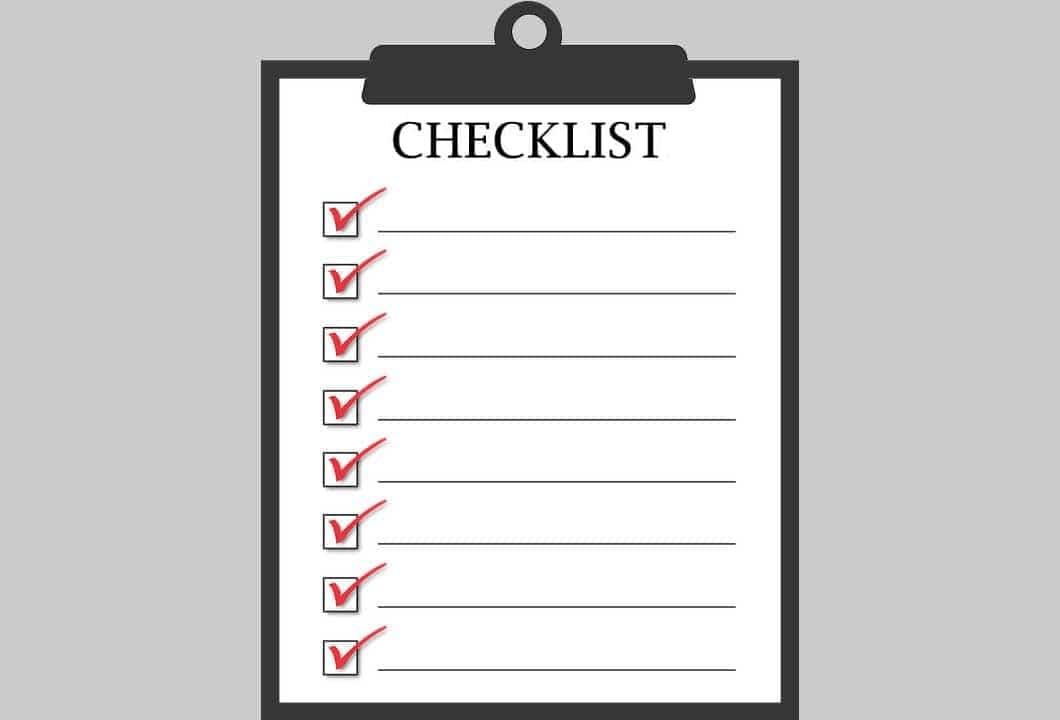
Testing your DR plan against your backup strategy might sound daunting and cumbersome, but good old checklists are here to the rescue. A simple checklist helps keep the entire DR team on track, monitor deadlines, expectations, milestones to reach, etc. As mentioned earlier, documentation is key to intelligent and efficient working. Here is a sample disaster recovery checklist that can serve as a base template for our users to tweak further to suit their backup requirements. To request a demo, opt for a free trial, or any further queries, contact our trusted support team and receive instant guidance and support. Zmanda is here for you!

